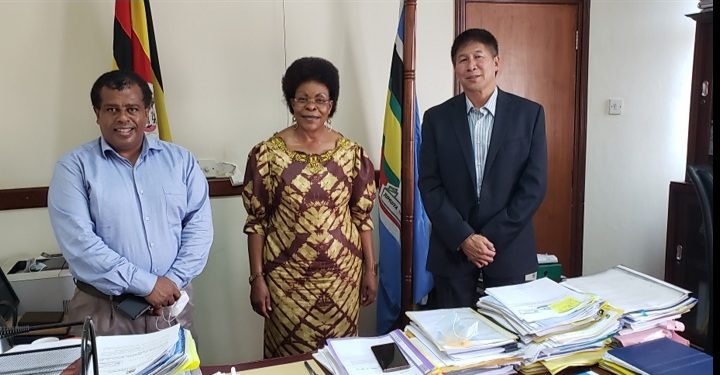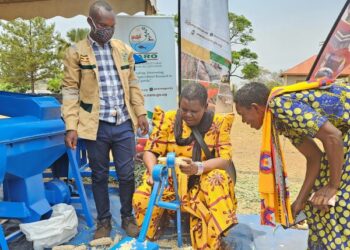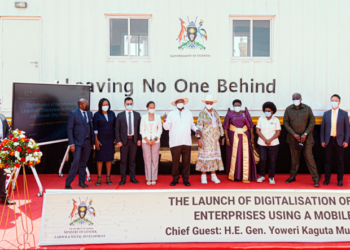Heads of Government Ministries and Agencies, working with Uganda Revenue Authority (URA) to implement the Rental Tax Compliance System (rTCS) have hailed the project as a key tool in aiding the government to achieve its Domestic Revenue Mobilisation Strategy (DRMS) 2019/20 – 2023/24 and have pledged to support it.
DRMS is a major government plan for the government to take greater control over its budget and increase the tax-to-GDP ratio to sustainable levels. Research estimates that Uganda has the potential to raise its tax-to-GDP ratio to between 20-26% against a ratio of 12.9% in FY2018/19. Per the Auditor General’s report, as of June 2020, Uganda’s public debt has increased by about 70 per cent in the previous three years from Shs33.5 trillion to UGX56.88 trillion. On the other hand, the Auditor General said that Uganda’s tax to GDP ratio, at 12%, versus the recommended 15% by the International Monetary Fund (IMF) and a Sub-Saharan average of 19% was too low.
The RippleNami Uganda Rental Tax Compliance System (rTCS) is a complex software application used to determine the highest priority individuals or corporations are likely to be underpaying their rental income tax obligations. Through the rTCS system, data is collected from many government and other data sources. The data supports evaluation and scoring for tax deficiency, with reason code results presented to URA investigators to prioritise who and why to investigate. Also, rTCS estimates the amount of rental income currently underpaid for each taxpayer.
RippleNami Uganda recently demonstrated a digital User Interface (UI) prototype of the Rental Tax Compliance System (rTCS) to the Uganda Revenue Authority (URA) Domestic Revenue Department. The demonstration included the URA Compliance Team, Tax Investigations Team, Process Management, Service Management, and Information Technology teams. The prototype provided the prospective users with a simulation of the final product for testing and feedback before launch.
“It’s critical that rTCS be intuitive, easy to use. The software must support the functions of the URA investigators in identifying landlords not declaring or under-declaring rental income,” observed Jaye Connolly-LaBelle, Chairman, RippleNami Uganda. “User interface experts specialising in easy-to-use UI were instrumental in the design. It was clear our investment paid off. We were able to do a thorough review of the general visual design, interaction and usability with the URA stakeholders, which was very well received.”
RippleNami Uganda employs high-fidelity prototyping to gain insights from users before proceeding with the final stage of development. Such prototyping is critical for gaining buy-in from stakeholders and assuring a successful launch of the final product.
“We were able to give the URA a detailed representation of the final product. We presented assets, interactions, and integrated details to test user responses,” noted Allyn Pon, RippleNami Inc. Chief Product Officer.
“We tested specific components of the product like navigation, look and feel, data content, user workflow and interactions. Empowering users to provide accurate feedback throughout the project eliminates major changes at the end of the development.”
Government ministries warm up to rTCS
Other than URA, other participating MDAs include the Ministry of Lands, Housing and Urban Development, Kampala Capital City Authority (KCCA), National Identification and Registration Authority (NIRA), National Water and Sewerage Corporation (NWSC), National Information Technology Authority (NITA-U), Uganda Communications Commission (UCC), and the Ministry of Local Government.
Hon Beti Kamya Turwomwe, the Minister of Lands, Housing & Urban Development has hailed rTCS as a transformation tool for both raising government revenue but also improving her own ministry’s service to clients.
“Through collective responsibility, the Ministry of Lands, Housing and Urban Development subscribes to the Government of Uganda’s Domestic Revenue Mobilisation Strategy (DRMS)- a master strategy that is aimed at raising more domestic resources, enhancing financial independence, while ensuring sustainable budget expenditures, for national development. The DRMS prioritizes the integration of government systems including the Land Information System (LIS), to identify landowners and ensure that they comply with their respective tax obligations. The Ministry therefore unreservedly supports rTCS,” she said.
“I also believe that the data, harvested from other government MDAs and utilities shall, at an appropriate time, be used to enhance our own land information and land records archiving system, thereby further improving service delivery to our clients. The Ministry is committed and would like to give this project all the cooperation and support needed,” she added.
Dr. Hatwib Mugasa, the Executive Director, National Information Technology Authority (NITA-U) said that the rTCS, is a timely move, especially at a time when the Government through NITA-U; is promoting a data-driven approach to improve public service delivery by integrating the different Government Information Systems for easier sharing and collaboration for simplified service delivery to the citizenly.
“The project (rTCS) is also a great opportunity for Uganda to test the benefits of the Fourth Industrial Revolution. By leveraging Blockchain Technology and Big Data Analytics, the project will not only usher this country into the Fourth Industrial Revolution but also will enable the people of Uganda to appreciate the power of emerging technologies in solving contemporary challenges. As NITA-U, we are excited to be part of this transformational project for our country,” he said.
Dr Silver Mugisha, the Managing Director, National Water and Sewerage Corporation (NWSC) also expressed unreserved support for rTCS.
He said: “The Government of Uganda in NDP III (2020/21 – 2024/25) set an ambitious target to increase access to safe water supply from 70 to 85 per cent for rural areas and from 74 per cent to 100 per cent in urban areas. NWSC as a government-owned company is one of the major implementors of this strategy and as such we recognize that the government needs to realise its tax revenue targets to be able to meet this goal. We, therefore, support all initiatives, including the use of technology in realizing the Government of Uganda’s Domestic Revenue Mobilisation Strategy (DRMS).”
He added: “On our part, NWSC has distinguished itself in deploying enabling technology for customer information management. Already, we have an ongoing partnership with URA, that has helped the tax body to realise their revenue objectives within the property tax segment in an efficient, nonintrusive and customer-centric manner. It is for this reason that NWSC was awarded the URA Commissioner General’s Strategic Partner of the Year Award 2019/20.”
Do you have a story in your community or an opinion to share with us: Email us at editorial@watchdoguganda.com












